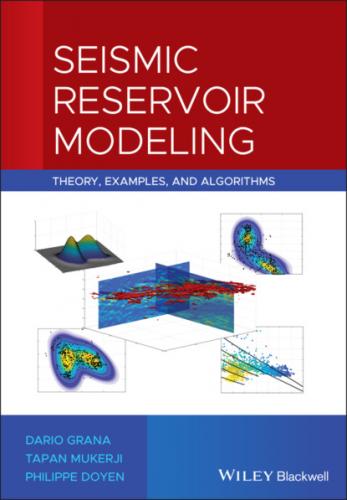The calculation of the normalizing constant P(B) in Bayes' theorem (Eq. 1.8) often requires additional probability tools. A useful result in probability theory is the theorem of total probability. We consider an event A and an ensemble of n events {Ei}i=1,…,n, and we assume that the events {Ei} are mutually exclusive (Ei ∩ Ej = ∅, for all i, j = 1, …, n with i ≠ j) and collectively exhaustive (
The theorem of total probability (Eq. 1.9) expresses the probability of an outcome of an event that can be realized via several distinct events as the contribution of the conditional and marginal probabilities.
We illustrate the application of Bayes' theorem and the theorem of total probability with an example related to the classification of porous rocks. A team of reservoir geologists classifies a group of porous rocks in a reservoir in three categories: shale, silt, and sand. The geologists are interested in rock samples with porosity greater than 0.20. The team wants to answer the following questions: (i) What is the probability of a rock having porosity greater than 0.20? (ii) If a core sample has porosity greater than 0.20, what is the probability that the rock sample is a sand? (iii) If a core sample has porosity less than or equal to 0.20, what is the probability that the rock sample is a shale?
Based on a nearby field, it is estimated that 20% of the reservoir rocks are shale, 50% are silt, and 30% are sand. If the event A represents the rock type occurrence, the available information can be written in terms of the prior probability P(A) of the event A as:
The literature data for the geological environment under study indicate that the probability of observing porosity greater than 0.20 in that specific region is 0.05 in shale, 0.15 in silt, and 0.4 in sand. This information represents the likelihood function. If the event B represents the occurrence of rock samples having porosity greater than 0.20, then the available information can be written in terms of the conditional probability P(B∣A):
We first compute the probability P(B) of observing high porosity in a rock sample, using the theorem of total probability (Eq. 1.9):
Then, we compute the posterior probability P(A = sand∣B) of a sample with porosity greater than 0.20 being a sand using Bayes' theorem (Eq. 1.8):
where the normalizing constant P(B) is computed using the theorem of total probability, as shown in question (i).
Finally, the probability
then we compute the conditional probability
1.3 Statistics
We
